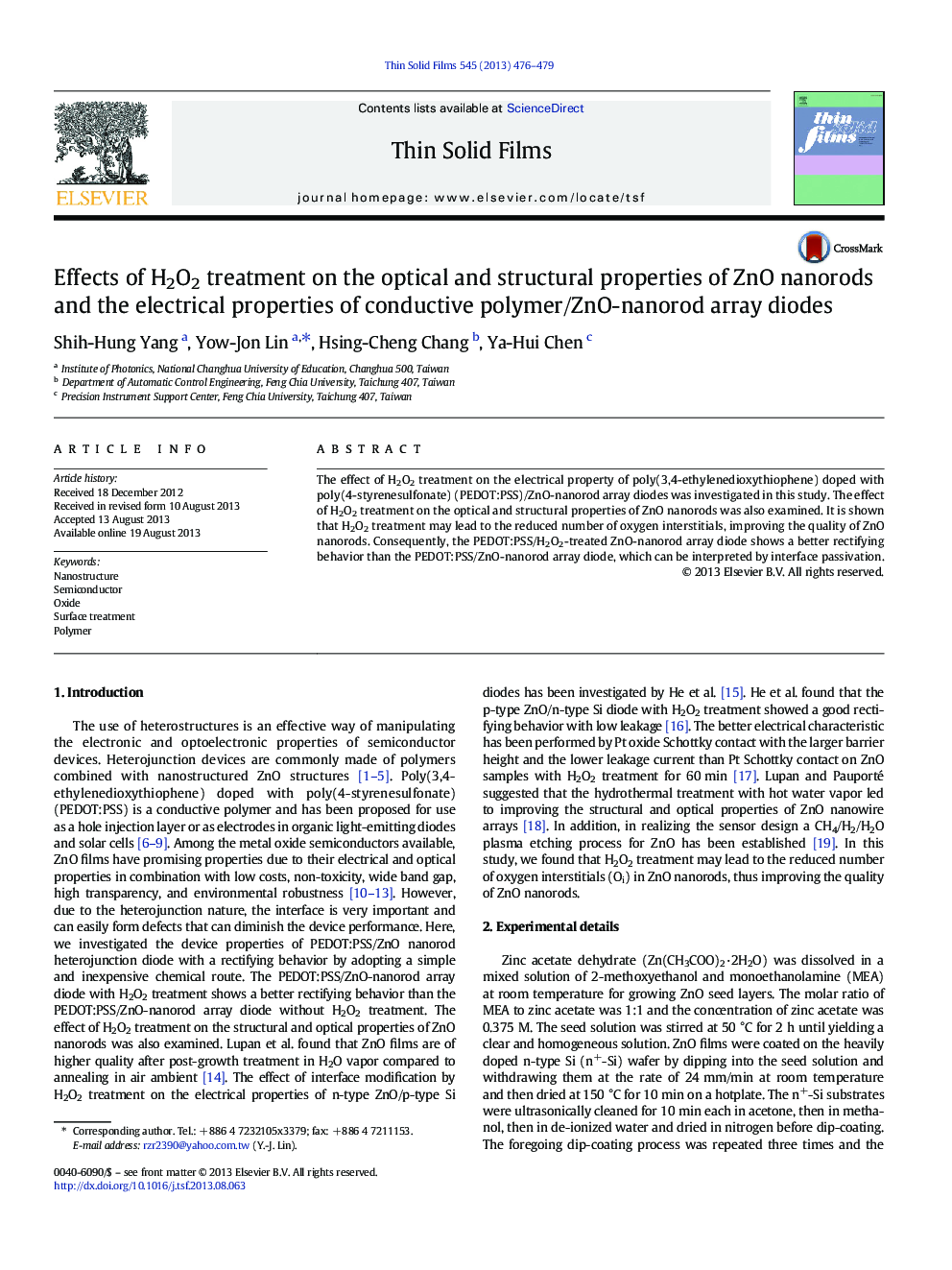| Article ID | Journal | Published Year | Pages | File Type |
|---|---|---|---|---|
| 8036263 | Thin Solid Films | 2013 | 4 Pages |
Abstract
The effect of H2O2 treatment on the electrical property of poly(3,4-ethylenedioxythiophene) doped with poly(4-styrenesulfonate) (PEDOT:PSS)/ZnO-nanorod array diodes was investigated in this study. The effect of H2O2 treatment on the optical and structural properties of ZnO nanorods was also examined. It is shown that H2O2 treatment may lead to the reduced number of oxygen interstitials, improving the quality of ZnO nanorods. Consequently, the PEDOT:PSS/H2O2-treated ZnO-nanorod array diode shows a better rectifying behavior than the PEDOT:PSS/ZnO-nanorod array diode, which can be interpreted by interface passivation.
Related Topics
Physical Sciences and Engineering
Materials Science
Nanotechnology
Authors
Shih-Hung Yang, Yow-Jon Lin, Hsing-Cheng Chang, Ya-Hui Chen,
